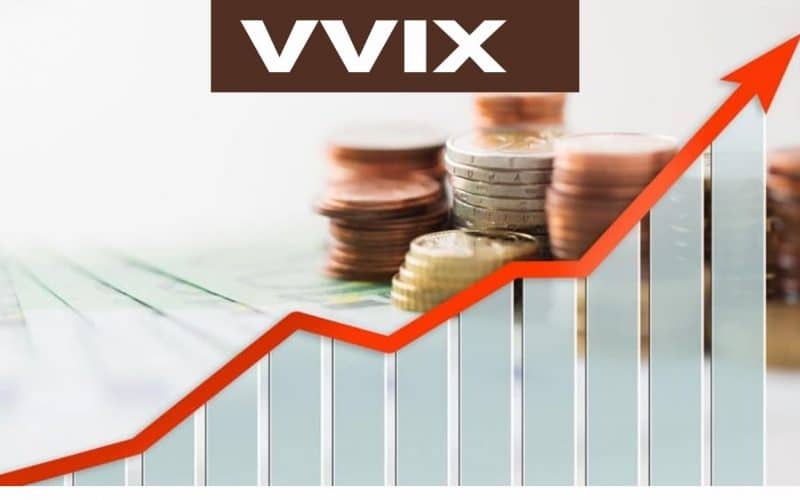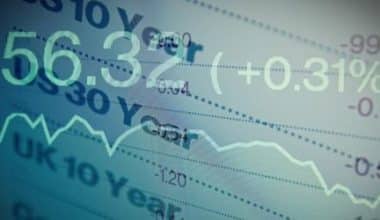Markets are demanding and every tool helps. The good news for options traders? Smart people keep inventing them. Traders traditionally rely on the SPX. Then came Volatility Index (VIX), which provides a theoretical estimate of the future volatility of SPX based on SPX options. To help option traders dig deeper into the analysis, the CBOE introduced VVIX in 2012.
What is VVIX?
VIX of VIX (or VVIX) is a measure of the volatility of the Chicago Board Options Exchange (CBOE) Volatility Index (VIX). The CBOE’s VIX measures the short-term volatility of the S&P 500 indexes, and the VVIX measures the volatility of the price of the VIX. In other words, VVIX is a measure of the volatility of the S&P 500 index and alludes to how quickly market sentiment changes.
Let’s dive into some important details about VVIX including its importance, features, and VVIX benefits to investors.
Why is VVIX Important?
Just as VIX is calculated based on SPX options, VVIX is calculated based on VIX options. The formula is basically the same. It is a complex weighting of the out-of-the-money (OTM) options to create a measure of the market estimate of the volatility of the index (SPX in the case of VIX and VIX in the case of VVIX) over the next 30 Days.
Thus, VVIX can indicate when VIX is not very volatile and therefore does not offer much volatility in SPX. This can happen when the VIX is relatively low, say below or around 15. Alternatively, a high VVIX suggests that the VIX may be more volatile in the future, which in turn could indicate a market assessment that SPX may also be more volatile.
For the past year, the VVIX has hovered between 82 and 203 and usually fluctuated between 90 and 120. There are a few things to consider. The first is that spikes in VVIX occurred around the time there were spikes in VIX. And if the VIX is relatively low and doesn’t move a lot, it’s the same with VVIX. The second is that VVIX can be more volatile than the VIX it is based on, just as VIX is more volatile than the SPX it is based on. For example, potential opportunities suggested by a high VVIX may be fleeting if VVIX falls behind.
Features of the VVIX
- The VVIX is strongly mean-reversing.
- Since every VVIX contract expires at some point, you cannot just make a profit by betting on the mean reversion. it must be fixed before your contract expires.
- The term structure relates to the relationship between price and contract duration. The VVIX term structure is generally descending, which means that the VVIX price tends to decrease as the contract term increases. This reflects that short-term forecasts are more volatile than long-term forecasts.
How to Measure Market Volatility With the VVIX Indicator
Oftentimes, the trades that seem too risky are the ones that turn out to be the most profitable.
It’s when things are at their worst. When you’re wondering if another crash is inevitable, and when the financial media highlights the “markets in turmoil” segments. This is where the best opportunities lie.
There’s an old WallStreet adage, “When there’s blood on the streets, buy if it’s yours.”
While this may be a catchy phrase, how does an investor determine if there is really “blood on the streets”?
Are we facing a simple battle or a war?
To answer that question, I’ll turn to one of my favorite indicators to shed some light on what’s really going on in the market and what should be my next step. The VVIX indicator recently triggered a surprising buy signal despite the market downturn.
A Sign of Panic
As investors, we are constantly bombarded with endless amounts of news content, be it Washington, corporate earnings, the Federal Reserve, or just analysts making predictions. We’re all looking for a way to cut the sound down to the main nuggets.
To remove the useless information, I turn to one of my favorite indicators: the CBOE VIX Volatility Index (VVIX). This index shows the “volatility of volatility” and, in my opinion, gives a good indication of whether there is really “blood on the streets”.
You have probably heard of the VIX or CBOE Volatility Index. The VIX, commonly known as the fear meter, serves as an indicator of whether investors expect difficult market phases.
In particular, the VIX is a measure of the implied volatility in short-term options on the S&P 500 index. You can think of implied volatility as the extra premium market makers charge for an uncertain future.
Think of an option like a home insurance contract. If you live on Florida’s Hurricane Alley, your home insurance premium will be higher than that of an inland resident.
The options market works the same way. Buying options on AMZN before an earnings report pays a higher premium for the uncertainty that the stock could get out of the expected range.
The VIX is focused on the S&P 500 for the next 30 days and tells us how much uncertainty to expect. When the VIX is low, traders expect relatively smooth sailing and no big surprises. When the VIX shoots higher, traders are concerned about a volatile market in front of them.
Let’s go one step further …
How Do You Measure Market Volatility?
The VVIX or “volatility of volatility” measures the rate of change in the VIX. An increase in the VVIX informs you of sudden changes in the additional premium for an uncertain future.
From this trader’s perspective, it is the VVIX that matters.
Sudden changes in expectations cause panic (i.e., “blood on the street”).
You can spot the VIX as a “Fog Ahead” sign on the freeway. Drivers see an unsafe road ahead and adapt their behavior.
But a spike in the VVIX is like an unexpected deer running in front of you as you take Route 1 85.
You don’t have time to slow down and adjust your driving style. All you can do is step on the brakes or drift off the road and hope for the best.
The VVIX is a better measure of “panic” because it shows that investors have grossly misjudged the future.
And when people panic, they often act irrationally – like turning off the road into a ravine to dodge the deer … or selling their stocks at the bottom.
Hence, this indicator can tell us if there is blood on the streets as it is a better indicator of panic. It shows us how quickly investor expectations are changing.
The VVIX, VIX, and the Stock Market
Both the VVIX and the VIX are usually inversely correlated with the stock market.
- When the market falls, volatility increases, causing the VIX to rise. The rise in the VIX then causes an increase in the volatility of the VIX (VVIX).
- So in general we see the VIX and VVIX peaks at similar times. For example, in the interactive image on the next slide, we see that the VIX and the VVIX both achieved high values during the 2008 financial crisis and the 2010 flash crash.
- However, the VVIX rises sharply for both large and modest wins in the VIX.
VVIX, VIX, and Market Returns
There is no significant correlation between the VVIX returns and the VIX and S&P 500 returns.
- While it’s true that VVIX and VIX tend to be high at the same time, the VVIX can also be high if the VIX is only increasing by a modest amount, as mentioned above.
- For long periods of no market declines, the movements of VVIX and VIX are usually independent.
- You can see this in the interactive picture below. Move the image to see the percent change axes of VVIX and VIX. You can see that the data points are generally horizontal, which means that the VVIX percentage change is not significantly affected by the VIX percentage change.
Similarly, if you look at the VVIX percentage return and the market percentage return axes, you can see that the VVIX is generally unaffected by the percentage return in the market.
However, if you look at the graph above (the VIX and market percent change axes) you will find that they are strongly negatively correlated.
What Can VVIX do for a Dealer?
You cannot trade VVIX directly as it is just an index with no options or even a futures contract. But just as VIX can give an indication of how strategies are created in SPX options, VVIX can indicate how strategies are created in VIX options.
A low VVIX indicates that VIX options can be relatively inexpensive. If the low VVIX is accompanied by a relatively low VIX and you are bullish on the VIX, a long call or a long call vertical can be a bullish strategy. With a low VVIX, the premiums of VIX options are also relatively low, so debit strategies can be more attractive.
With a high VVIX, the VIX premiums can also be relatively high. If you are bullish on the VIX on this scenario, a short put or a short put vertical could be a bullish strategy that is possible because of the higher credit possible with the higher volatility of the VIX options.
You can try adding VVIX to your watchlist on TD Ameritrade’s thinkorswim® trading platform. If you place it next to VIX and SPX you can see the three move relative to each other during live trading. And now that you know what VVIX is, it can become a valuable part of your business identification toolbox.
How Can VIX Investors Benefit From VVIX?
Investors can benefit from using VVIX as it provides useful insight into the VIX option and future pricing, including the following information:
- The expected volatility of the VIX
- The expected volatilities that will affect the direction of VIX option prices with different expiration dates
- A global view of market confidence in future VIX values
- Investors can benefit from the volatility when the prices of the VIX futures deviate from their fair value.
Pitfalls in investing in the VIX itself are higher commissions and different tax treatments. It can also be riskier to invest in the VIX as options and futures have an expiration date – the investor needs to predict both the volatility and the time frame in which they will reach this level.
The most common and easiest way to add VIX to a portfolio is through Exchange Traded Notes (ETNs), while options and futures are riskier but have higher payouts. Options have built-in leverage, which means the returns are higher, but their prices can change relative to the VIX as they are based on the expected future value.
They are traded European style which means they cannot be exercised before the expiration date. Futures also have inherent leverage and their prices are based on the forward value of the VIX, although the actual value may vary.
Conclusion
Investors can use the VVIX and its derivatives to VIX of VIX, or VVIX, in turn, allows investors to put their money on the speed of changes of the volatility of stocks-It gives them to hedge against volatility swings or bet on changes in the VIX options market.






